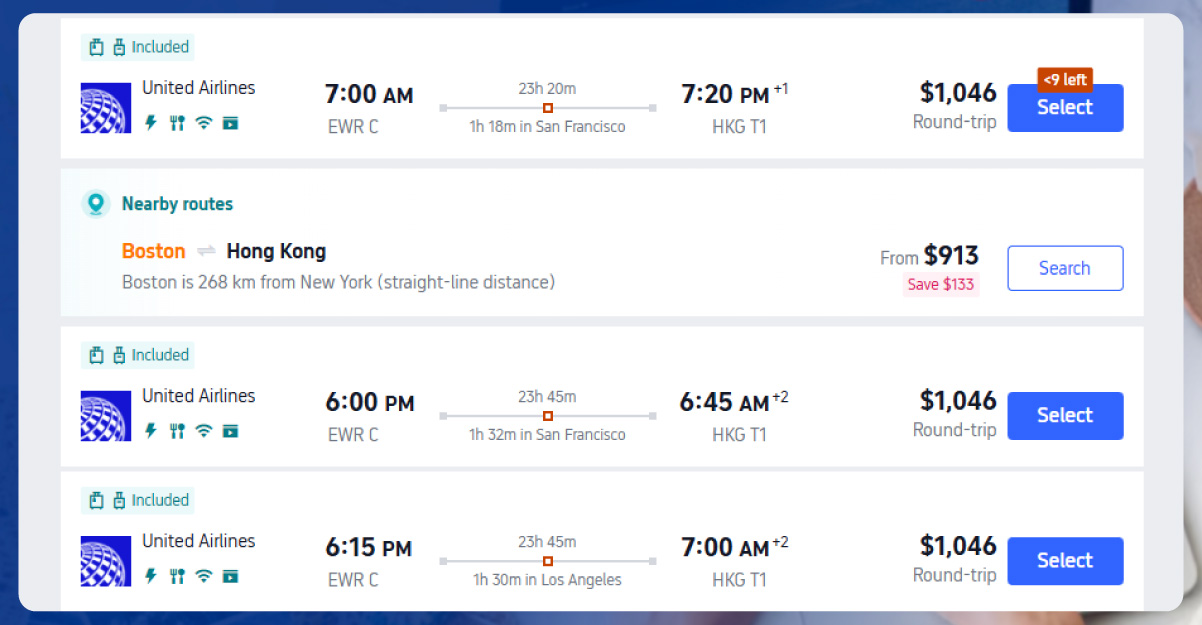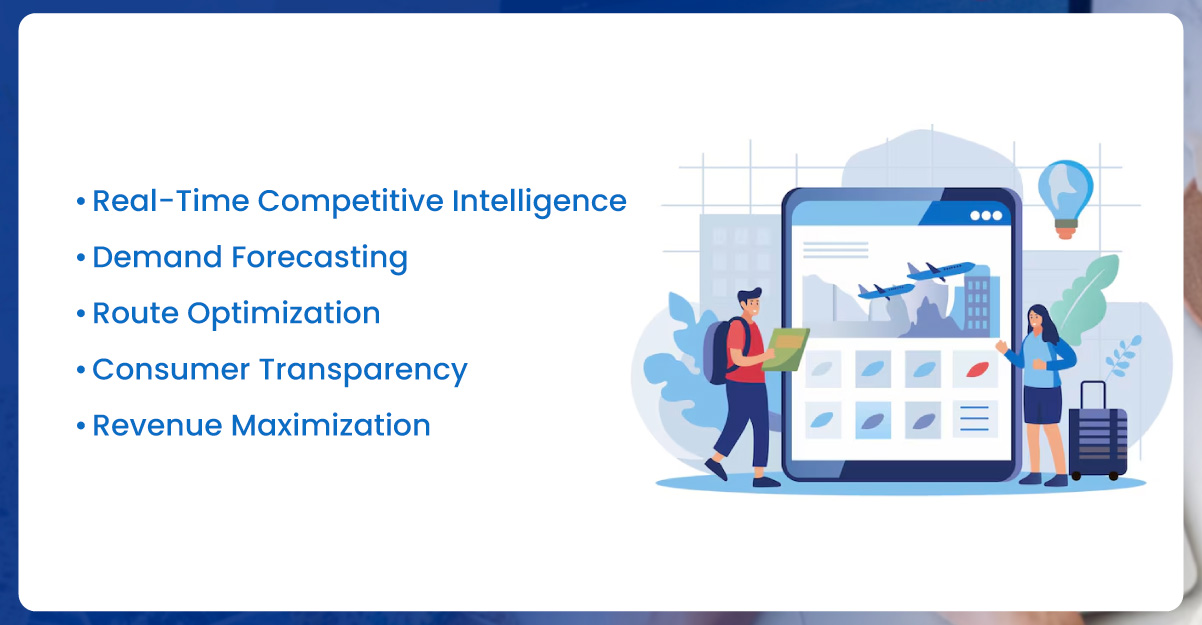
Try your luck — spin the wheel and unlock up to 30% OFF or exclusive freebies!

In today’s fast-paced travel industry, data is the true engine of growth. Airlines and online travel agencies rely heavily on advanced analytics to set competitive fares and manage routes efficiently. One of the most valuable tools driving this change is Airline Dynamic price data scraping, a method that allows businesses to collect, process, and analyze real-time fare and route data from multiple sources to stay ahead of market fluctuations.
The dynamic nature of airfares—constantly changing based on demand, seasonality, competition, and availability—makes flight price data scraping an essential strategy for anyone operating in the travel ecosystem. From OTAs (Online Travel Agencies) and price aggregators to airline analysts and travel startups, access to clean and structured data ensures smarter decisions, optimized pricing, and better customer satisfaction.
Through efficient travel portal data extraction, companies can collect critical insights from leading airline booking platforms, fare comparison sites, and online travel communities. This helps them understand route trends, competitor pricing, promotional campaigns, and historical flight patterns—transforming raw web data into actionable business intelligence.

Airline pricing follows a complex algorithm influenced by multiple factors—seat availability, booking time, demand patterns, and market competition. These variables shift constantly, which means the same ticket can have multiple prices within a few hours.
With method to Extract airline route optimization data, travel data engineers can analyze flight schedules, route efficiency, and connection patterns to identify the most profitable or time-saving routes. Airlines use this information to adjust routes, improve scheduling, and enhance passenger load management. For travel agencies, it means being able to offer customers optimized itineraries and cost-effective options in real-time.
Data scraping plays a crucial role here, allowing seamless collection of fare details, route maps, flight schedules, and availability metrics directly from multiple airline websites or APIs. This empowers stakeholders to build robust dynamic pricing systems and recommendation engines that mirror real market behavior.
When businesses Scrape flight comparison engine data, they gain access to live pricing information from multiple carriers and aggregators. These engines pull data from hundreds of airlines, travel agencies, and global distribution systems (GDS), presenting an enormous opportunity for analysts to evaluate and benchmark airfare competitiveness.
For example, by monitoring pricing data from comparison engines like Skyscanner, Kayak, or Google Flights, travel companies can identify how competitor airlines are adjusting their fares across different destinations. This enables them to respond quickly by recalibrating their own dynamic pricing models.
Moreover, the integration of real-time flight fare monitoring enables travel portals to automate updates in fare listings, ensuring customers always view the latest, most accurate ticket prices. This real-time accuracy directly enhances user trust and booking conversions, giving businesses a competitive edge in the digital marketplace.

Airfare data scraping offers immense benefits across the travel ecosystem. Here are some of the most impactful outcomes:
Through travel metasearch data scraping, these benefits expand further. Metasearch engines provide an aggregated view of fares from multiple sources, enabling in-depth analysis of how pricing behaves across routes, seasons, and customer segments.
Modern travel technology solutions now integrate AI, machine learning, and predictive analytics into their data scraping frameworks. This synergy enables the automation of travel price comparison scraping across hundreds of data sources, identifying the most relevant and profitable fare opportunities.
By using intelligent algorithms, companies can clean, structure, and visualize scraped flight data to understand how pricing evolves over time. Such datasets become valuable assets for developing predictive models that forecast future airfare trends based on past behavior and external factors like weather, events, and global fuel prices.
Additionally, with flight fare API scraping, developers can create custom solutions that continuously extract live flight and pricing data directly into their systems. APIs enable automated integration with booking platforms, dashboards, or analytical tools, ensuring uninterrupted data flow without manual intervention. This allows travel tech companies and startups to maintain data accuracy, improve decision-making speed, and personalize user experiences.

Airfare data scraping doesn’t just serve pricing analytics—it drives every decision in the travel business ecosystem. Here’s how various stakeholders benefit:
These applications are powered by Travel Data Extraction Services, which ensure that structured, validated, and scalable data pipelines are maintained. Whether through APIs, web crawlers, or automated data feeds, this infrastructure empowers continuous visibility into airfare trends across global markets.
By collecting and analyzing flight fare data, businesses can extract valuable market insights, such as:
Such deep insights derived from Travel & Tourism App Datasets help travel enterprises innovate faster and cater to customers with greater precision.
Empower your travel business with real-time pricing insights—get started today with our advanced Airline Data Scraping Solutions for smarter, data-driven decisions.

While data scraping offers immense potential, it also comes with technical and ethical challenges. Websites frequently update their structures, employ anti-bot mechanisms, or restrict data access through paywalls. Maintaining compliance with data protection laws and fair-use policies is essential for ethical scraping practices.
Developers must therefore build systems that respect website terms of service while leveraging publicly available data responsibly. Partnering with professional service providers who specialize in compliant scraping ensures reliability and accuracy without legal complications.
Airline Dynamic Price Data Scraping is transforming the global travel ecosystem by offering real-time visibility into fare fluctuations, route performance, and market demand. For airlines, it drives data-informed pricing strategies that enable better revenue management.
As the industry continues to evolve, the integration of Travel Intelligence Services will play a key role in optimizing how businesses interpret flight pricing patterns and competitive movements. These services help transform complex data into actionable insights.
Alongside this, the adoption of Travel Data Scraping API will become crucial for maintaining seamless connectivity across travel systems and platforms. APIs ensure the smooth flow of data between airlines, travel agencies, and analytical tools.
Finally, advanced Travel Data Scraper solutions will remain indispensable for extracting, structuring, and analyzing dynamic airfare information at scale. Together, these technologies will form the foundation of a smarter, more responsive, and data-driven travel ecosystem—where every route, price, and decision is powered by insight, precision, and innovation.
Experience top-notch web scraping service and mobile app scraping solutions with iWeb Data Scraping. Our skilled team excels in extracting various data sets, including retail store locations and beyond. Connect with us today to learn how our customized services can address your unique project needs, delivering the highest efficiency and dependability for all your data requirements.
It collects real-time flight prices and route details from airline sites, helping businesses track fare changes and market trends instantly.
Airlines use pricing analytics to adjust fares based on demand, season, and competition for higher revenue and better route performance.
Web scraping helps travel companies gather live flight, fare, and route data to improve pricing strategies and traveler experience.
Flight data APIs enable automated fare scraping, real-time price tracking, and seamless integration with travel analytics tools.
Online Travel Agencies gain live pricing, competitor insights, and route trends—helping them offer the best flight deals to customers.